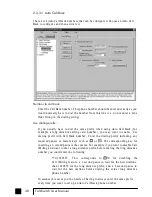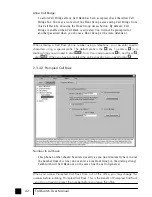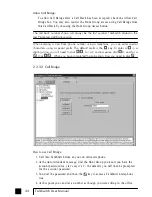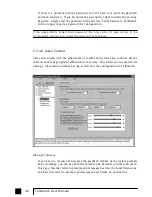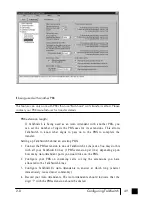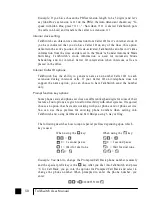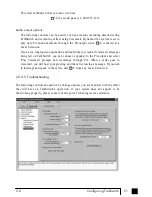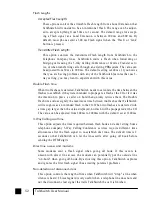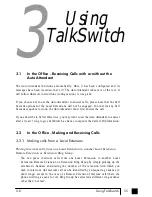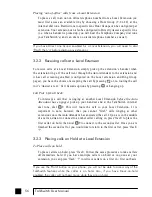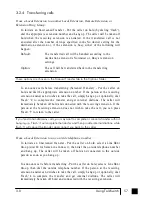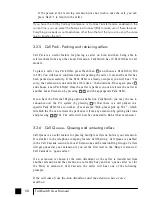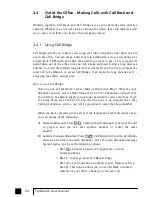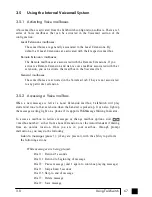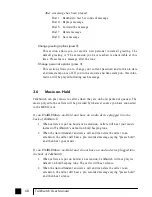
Flash Lengths
Accepted Flash Length:
These options control the allowable Flash length from a Local Extension that
TalkSwitch will consider to be an intentional Flash. The range can be adjust-
ed to accept anything from 50ms to 1 second. The default range for accept-
ing a Flash signal at a Local Extension is between 200 ms and 800 ms. By
default, most phones emit a 300 ms Flash signal when the ‘Flash’ or ‘Link’
button is pressed.
Transmitted Flash Length:
This option controls the transmitted Flash length from TalkSwitch to the
Telephone Company lines. TalkSwitch emits a Flash when forwarding or
bridging calls using the 3-Way Calling/Conference or Centrex Transfer serv-
ice, or when transferring calls through an existing PBX system. The value can
be adjusted from 50 ms to 900 ms. The default setting is 400 ms. If you notice
that you are having problems with any of the TalkSwitch features that use 3-
way calling, you may want to experiment with this value.
Double Flash time:
When two flashes are detected, TalkSwitch needs to calculate the time between the
flashes to establish if they were intended to propagate a flash at the CO or if it was
the intention to place a caller on hold then quickly retrieve them. The Double
Flash time values signify the maximum time between two flashes that TalkSwitch
will recognize as an intended flash to the CO. When two flashes are detected with
a time gap larger than the value displayed, no flash will be propagated at the CO.
The value can be adjusted from 200ms to 2000ms with the default set at 1200ms.
3-Way Calling wait time:
This option adjusts the time required between flash hook and a dial string. Some
telephone company 3-Way Calling/Conference services require different time
allowances after the flash signal to re-establish dial tone. The default time is 2
seconds so that TalkSwitch can let the lines settle after going off hook before
sending the DTMF digits.
Direct line access and modems:
Some modems emit a flash signal when going off hook. If this occurs in
unison with direct line access, the modem can potentially put the outside line
“on-hold” when going off-hook. By activating this option, TalkSwitch captures
and ignores the first flash signal thus avoiding potential problems.
Non-detection of disconnect-clear:
This option controls the length of time when TalkSwitch will "drop" a line when
silence is heard. This safeguard is very useful when a telephone line does not send
out the disconnect-clear signal that tells TalkSwitch the call is finished.
52
TalkSwitch User Manual
TS-user manual_Final_3rd.qxd 8/9/01 2:14 PM Page 52



